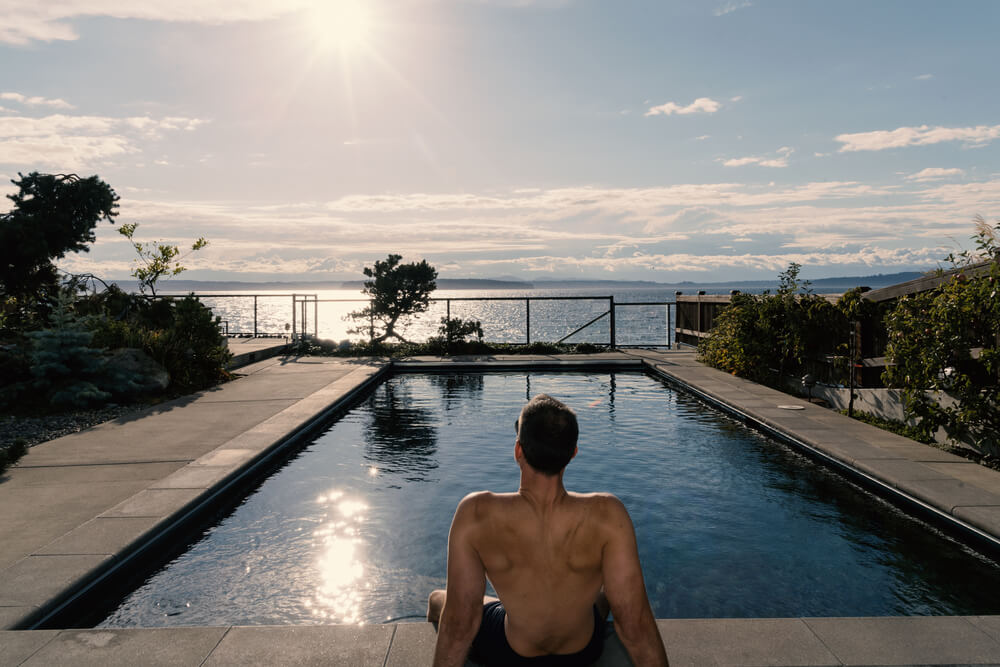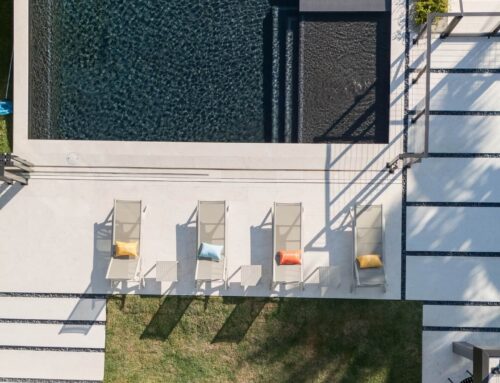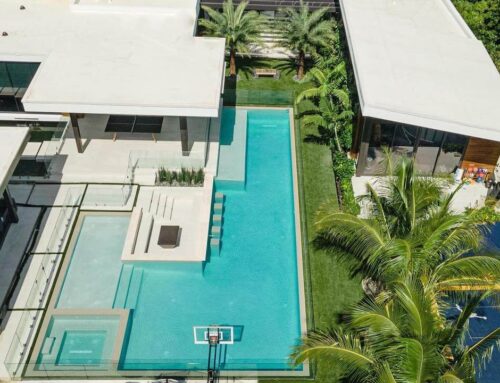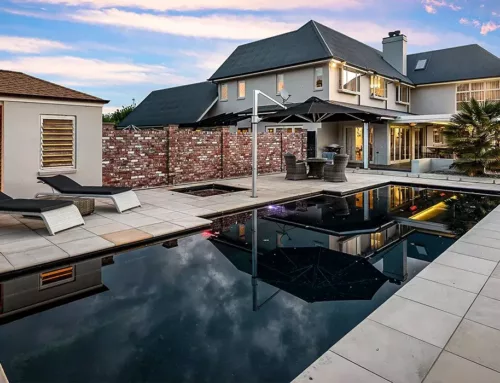Wouldn’t it be great to swim a few laps every morning in your backyard? Unfortunately, pools are far too expensive, and you need a huge backyard to install a pool worth having. That is unless you install a lap pool. Lap pools afford you all the benefits of a full-size swimming pool in a fraction of the space and for a fraction of the price. But, what is a lap pool?
We’re glad you asked, and you’ve come to the right place to find out. Below, you’ll find all the basic information about lap pools and what it takes to have your own.
Lap Pool Basics
The name already tells you most of the story. Lap pools are those designed to accommodate swimming laps. They’re usually made in either Olympic (50 meters), or junior Olympic (25 meters) sizes in a broader context.
But as a homeowner, you can install a lap pool that is as long or as short as you like. In principle, the only difference between lap pools and traditional pool designs is that they are longer and shallower than most typical pools. For that reason, most homeowners who opt for lap pools do so either because of space constraints or because they enjoy swimming frequently, but sometimes both.
Residential property owners can also maximize the use of their property with lap pools. They can be installed in spaces that otherwise wouldn’t accommodate traditional pools and still offer all the benefits of a pool to tenants.

Types of Lap Pools
Above-ground lap pools are uncommon but used in specific scenarios. When a property can’t be dug into for whatever reason, above-ground lap pool installation is an option. However, most are in-ground pools.
Since the primary difference is in their size, lap pools can be made from the same foundational materials as traditionally sized pools. Concrete, vinyl, and fiberglass are all good options for lap pools. With the caveat that concrete usually gives the most flexibility out of the three.
There are also prefabricated lap pool kits that may be a little less expensive for some people. But you’d be restricted to the size of the kit, and transportation costs could easily cut into the savings you might get by using them.
How Long is a Lap Pool?
If you’re building a custom lap pool, the length is entirely up to you. But many consider 40–82 feet to be the right length range. Any shorter than that, and it might be a little tedious to swim laps if you have to switch directions too frequently. And 82 feet is the standard lap pool size for most pools that you’ll find in most health clubs.
The standard lap pool size width is between 6–10 feet. Again, you can go above or below that if you choose. But if you plan to use the pool primarily for swimming, you won’t get much by going any wider than six feet.
Most lap pools don’t need to have a deep end, and it’s best to keep a uniform depth if it’s going to be a family pool that children will use.
What is a Lap Pool Good For? – Benefits
We already talked about one of the key benefits of lap pools, and it’s probably the one that most people consider it for. And that’s the size.
Lap pools are extremely versatile because they take up much less space than traditional pools. It can easily be integrated into a property to maximize the use of space without over-cluttering it and even lends itself to indoor pool formats easily.
At the same time, a lap pool can offer all the benefits of any other backyard pool. It can have a spa area, incorporate water features, and fit into the aesthetics of your yard and home without much fuss.
The other main benefit you can glean from lap pools is exercise in the form of regular swimming. A kidney pool might have a bigger area than a lap pool while still offering no good straight line to swim in. Once you hit your stride, having to change directions frequently is distracting and isn’t conducive to good exercise, so you want as long of a path as you can manage.
And it can be useful for rehabilitative exercise and to provide resistance in a safe way for older swimmers. Water exercises are among the safest and most effective ways to remain healthy into your old age.
Drawbacks of Lap Pools
Lap pools don’t present any substantial drawbacks, but there are a few things that you should consider when installing one.
- Length — If you’re doing a lap pool installation because you’re serious about swimming, it’s best not to make it very short. You’ll need at least 40 feet in length to get serious laps in.
- Cost — Lap pools are a very efficient way to use a long and narrow space, but they’re not the cheapest pools. If you don’t really need it for exercise, a hot tub might be a more cost-effective solution. Our pool installation professionals at Florida Pool and Patio can help you decide what the best solution is for your property and give you a free quote.
What is a Lap Pool Like in Terms of Maintenance
Lap pools often have the same water volume as pools with traditional shapes; it’s just distributed differently. In principle, there’s no real difference in how you’ll maintain your lap pool from how you would maintain any other.
You’ll need to make sure chemical levels are always in order, and the pool’s walls and bottom are clean. Vacuuming a lap pool by hand is a little easier than doing so with unusually shaped pools. All it takes is even back-and-forth motion instead of having to conform to strange angles and turns.

Alternatives to Lap Pools
There’s no perfect substitution for a lap pool and all the benefits it provides. But if your goal is only to get some exercise and you don’t have space for anything bigger, a swimming spa could be an option.
Swimming spas come in many shapes and sizes, but they all basically boil down to a small above-ground pool. They employ strong water jets to create resistance when you’re swimming, so you don’t move horizontally but still get some exercise. Of course, you won’t have a pool for other activities, but at least one aspect of the lap pool will be covered.
Lap Pool Installation; Is it For you?
Now you’ve got a good overview of lap pools and all the benefits they offer. To get a sense of what one would look like, head over to our gallery and take a look at some of the lap pools we’ve installed for residential and commercial clients.
And if you’re ready to have one on your property, contact us today to get a free quote. We’ll help you decide if lap pools are right for you and how to accommodate your space and budget best.
Are you considering a lap pool primarily for exercise or to make the best use of your property? Let us know in the comments, along with your favorite kinds of lap pools.






